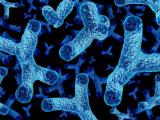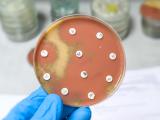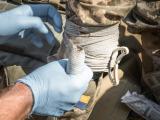Oct 21, 2011 (CIDRAP News) – Researchers at a national infectious disease conference yesterday raised concerns about the availability of antibiotics, citing new information about the lack of new treatments against resistant Gram-negative bacilli (GNB) and shortages of current drugs that appear to be affecting patient care.
Two groups presented their findings at a press conference yesterday at the Infectious Diseases Society of America (IDSA) meeting in Boston. The groups are slated to present their reports during poster sessions today and tomorrow.
In 2010 the IDSA, with deep concerns about the lack of treatments for antibiotic-resistant infections, launched an initiative to spark the development of new antibiotics. Its "10 by '20" campaign calls for the development of 10 new systemic antibiotics by 2020.
James Hughes, MD, president of the IDSA, told reporters, "We're facing a market failure and an innovation gap."
A 2009 survey documented a lean pipeline for new antimicrobial drugs specifically designed to treat GNB such as Acinetobacter baumannii, which are becoming more common and resistant to treatment. However, for a variety of scientific and business reasons, there are few drugs in pharmaceutical company pipelines.
Helen Boucher, MD, assistant professor of medicine at Tufts University School of Medicine in Boston, presented an update on the survey, showing tangible progress on nine intravenous (IV) compounds. "But none are available now, and our patients need drugs today," she said. "The lean pipeline is a cause of justifiable alarm."
Only three of the compounds have novel mechanisms of action, and none are active against all multidrug-resistant strains, she said, adding that because of attrition, clinicians can't count on all nine of the drugs making it to market.
Boucher said two measures that might help promote the development of GNB compounds are clarifications in regulatory guidance from the US Food and Drug Administration (FDA) and financing incentives to pharmaceutical companies to build a stable and robust infrastructure.
Healthcare practitioners are also struggling with shortages of other types of antibiotics that are already on the market, according to a research group's survey presented at the news conference by Phillip Polgreen, MD, MPH, associate professor of internal medicine at the University of Iowa and director of the IDSA's Emerging Infections Network (EIN), a surveillance system funded by US Centers for Disease Control and Prevention.
The Web-based survey, conducted in May and June, included responses from 503 infectious disease physician members of the EIN who were asked about experiences with antimicrobial drug shortages. Polgreen said the survey had a 50% response rate.
According to the survey, 78% reported that shortages over the last 2 years required them to modify their treatment plans, and 55% said the shortage adversely affected patient outcomes. Examples of adverse outcomes included use of a more toxic antibiotic, a more costly agent, a broader-spectrum drug than required, and longer hospitalizations. Five respondents said the shortage was associated with a patient's death.
The most common type of shortage was of injectable and IV trimethoprim-sulfamethoxazole and amikacin. Polgreen said the types of drugs affected by the shortages tend to be ones that are used less often, and that more study is needed to explore the root causes of the problem.
Respondents also reported problems getting information about shortages: 70% said they learned about a shortage from a pharmacy after trying to prescribe a drug that was in short supply. Only 26% reported that they learned about shortages from official sources, such as the FDA.
Polgreen said the survey nature of the study could overstate the problem with shortages, but that the number of responses speaks to the problems with the supply chain.
See also:
IDSA "10 by '20" initiative background






















